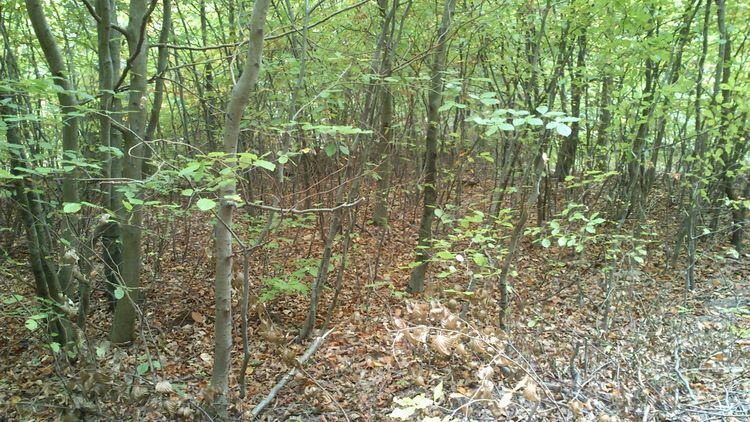 | ||
Natural beech wood is a beech wood, that is able to replenish and sustain itself on its own.
Contents
Beech is a valued timber, but most beech woods requires human intervention to replace old trees, since the young trees are not able to survive at all or at a rate, that sustains the beech population over time. There can be various reasons for this condition. Heavy forest floor coverage of other plants in the spring, shadowing the young beech-shoots is a common cause. Abundance of nutrient rich soils, will also be difficult to handle for beech woods in the long run.
In a natural beech wood, one would see beech trees of all ages, including fallen and dead trees. Other tree types might be mixed in, but not to a degree that they threaten the dominant beech.
The term could be used with other kinds of tree species, such as 'natural oak wood', 'natural birch wood', etc..
Natural beech wood forests
Examples of natural beech wood forests, includes:
Threats
Agricultural practices can often change the original soil-compositions so much, that the specific natural woodland type once associated with the local area, will change too. This change is almost irreversible. This condition has now affected most of Europe.
Local or global climate changes can also have a profound effect on what kind of natural woodland can grow and survive in a specific area.
European beech is usually more susceptible to climatic changes than soil-composition and the current global climate change are found to affect the geographical distribution of the natural beech wood habitats.
Misunderstandings and confusions
The term "Natural" is often confusingly used as a synonym for "Primeval". While primeval woodlands that still exists, are indeed natural, natural woodlands does not have to be primeval per se. Secondary or re-established woodlands can also be natural; it is just a matter of whether a given forest type is able to sustain and replace itself on its own - i.e. if the climatic and geological conditions for a given forest type is present or not. These conditions can be objectively determined, and does not depend on the "test of time" exclusively.
The term "semi-natural" is sometimes used to describe any natural woodland, that is not strictly primeval in origin.
